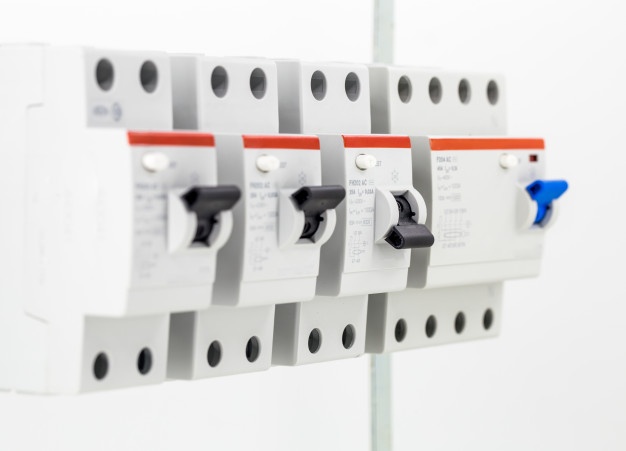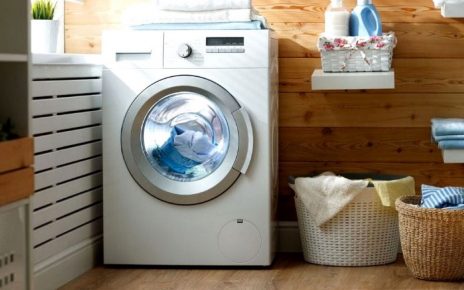If you own a residential or commercial property, your electrical system needs to be safe and secure. This means there needs to be a reliable system of circuit breakers. If you have a faulty system, it could turn fatal in the blink of an eye. In this beginner’s guide to moulded case circuit breakers, we examine different types of breakers and what makes them so essential in modern-day homes. You’ll also learn how to troubleshoot any problems related to these devices, and find out why installing a new circuit breaker in a home is necessary.
What is A Moulded Case Circuit Breaker (MCCB)?
A moulded case circuit breaker is a type of automatic circuit breaker used to provide short circuit protection, overload protection, or both, for electrical circuits. The body of the moulded case circuit breaker is typically made of glass-reinforced plastic (GRP) insulating material.
AN MCCB also has multiple protective functions, including current limiting, over-voltage protection, voltage limiting, under-voltage protection, thermal protection, and arc prevention, which makes them an essential tool in today’s modern power systems.
They are available in a wide variety of configurations and sizes, to serve a variety of applications, from household to high-voltage switchgear. These medium-voltage circuit breakers are available in various amperages ranging from 20A to 125 and are easy to handle and relatively lightweight.
How Do MCCBs Work?
Moulded case circuit breakers (MCCBs) are used to interrupt the current to an electrical device when its instantaneous value exceeds the trip setting of the breaker. Unlike fuses or circuit breakers, moulded case circuit breakers are designed for easy replacement of thermal-magnetic mechanisms. Although this is a premium product that offers outstanding performance and is designed for commercial use, it’s also ideal for residential properties.
It consists of a temperature-sensitive device, often termed as the thermal element in addition to a current-sensitive electromagnetic device also known as the magnetic element. This allows an MCCB to offer a trip mechanism feature for isolation and protection. With an MCCB, you can stay protected against electrical hazards like short circuit current, overload protection, and so on. For residential applications, you can get a 100-amp 4 pole MCCB at a great price and enjoy all-around protection.
Features of MCCB
- Electrical Fault Protection
During normal operation, the solenoid coil in MCCBs creates an electromagnetic field that is small enough to disregard. However, when a short circuit occurs, the electromagnetic field generated by the solenoid coil increases significantly and breaks the circuit automatically. If a short circuit occurs, the circuit’s electrical current changes to a high level. This causes an electromagnetic field to form, attracting the trip bar and opening the circuit’s contacts.
- Overload Protection
The overload protection in an MCCB is provided by a thermal component that essentially consists of a bimetallic contact. The temperature-sensitive component allows the circuit breaker to open if it overheats, preventing damage to the electrical system. It is made of two separate metals that expand at different rates when they are exposed to heat. During the normal operating conditions, excess electric current will flow through the overload protection component.
- Electrical Switch for disconnection
Arc-quenching mechanisms are built into MCCBs for safety during maintenance or other emergency operations. Without the arc quenching protection, there is a risk of an electric arc starting when you open the contacts inside an MCCB.
Types of Components in MCCB
- Frame
Moulded cases have an insulated housing to mount all the circuit breaker parts. It is made with thermoset composite resin or glass polyester, providing high dielectric strength inside its compact design. The frame may also contain additional details about an MCCB such as its current rating, maximum voltage, and so on.
- Operating Mechanism
The contacts are opened and closed through the operating mechanism, which is operated by turning the handle. The speed that the contacts open and close is determined by how far the handle is turned. If the contacts are tripped, you will see the handle in the midway position. If the breaker is already in the on position, then there’s no danger of tripping it – that’s called trip-free. The breaker must be switched to the off position first and then back to the on position before you can turn it on.
- Arc Extinguisher
When an arc is generated, the circuit breaker interrupts the current flow. The arc extinguisher limits and divides that arc. Its extinguishing chamber is enclosed in a high-strength insulation box which is mainly composed of a stack of steel plates. When the magnetic field is disturbed by a neighbouring field, the arc-drive current increases, and the arc is pushed into the plate. When deionized gas between the two plates is blown away by magnets, the arc is unable to cool and dies out.
- Trip Unit
The Trip Unit feature in a range of circuit breakers is a safety mechanism that is used to cut off the circuit when it’s overloaded. Circuit breakers with the Trip Unit feature combine an electromechanical device with a current-sensitive electromagnetic device to get the job done. Moulded-case circuit breakers with electronic trip units are now available and they can provide much more advanced protection and monitoring than traditional breakers.
Advantages of MCCB Over Traditional Counterparts
- MCCB operate with less current
- Less heat generation
- Lower power demand
- Leakage current is reduced
- High interrupting current capability
Bottom Line
To better understand the world of moulded case circuit breakers, you’ll need to learn about how they work, their operating characteristics, and what makes one breaker type different from another. With the right information, you’ll be able to make an informed decision about which breaker is best for your unique application. To gain additional information about MCCBs or get a reliable 100-amp MCCB at affordable prices, make sure you check out Schneider Electric.




